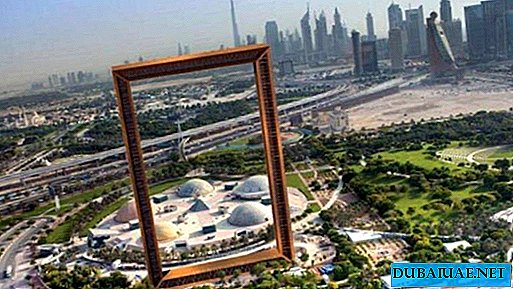ON THE CONSOLE OF THE GOTHIC CLUB (XIV C), YOU CAN SEE TWO ANGELS SUPPORTING THE COAT OF ARMS OF MONTSERRAT WITH IMAGE OF CRACKED MOUNTAIN. "GOLD SAWS LITTLE ANGELS CUT THESE ROCKS TO BUILD YOUR PALACE." THIS SIMPLE AND NAIVE TEXT "VIROLAYA" (ANCIENT BALLAD) EXPRESSES Rapture,  WHICH CAUSES IN MANY MONTSERRATES, ANIMATED BY THE MILLENNIUM WORSHIP OF THE IMAGE OF THE HOLY VIRGIN.
WHICH CAUSES IN MANY MONTSERRATES, ANIMATED BY THE MILLENNIUM WORSHIP OF THE IMAGE OF THE HOLY VIRGIN.
Tatyana Peschanskaya, doctor, candidate of medical sciences, passionate traveler and our regular author.
The mountain, which is a symbol of the presence of the divine principle in all religions, has become the site of a Christian cult in Montserrat and the founding of a Benedictine monastery in the 11th century. The mountain - a shrine, a meeting place and a monastery - are coordinates that express the multifaceted and amazing effectiveness of Montserrat.
Sacraments of the Sawn Mountain
Thirty-eight kilometers from Barcelona, in the central part of Catalonia rises the majestic, bizarre forms of the Montserrat mountain range, the highest peak of which is Sant Jeroni peak at an altitude of 1236 meters above sea level. The amazing shape of the rocks of the mountain range, from which it is difficult to take your eyes off, was the result of a long geological evolution with the beginning of the Tertiary period. The elliptical massif is 10 km long and 5 km wide, and its perimeter is 25 km.
 This compact organic formation with several branches has a characteristic profile of a "sawn mountain" formed by the patient exposure to water, sun, rain, glaciers and wind. The rich variety of landscapes has long captivated folk fantasy and served as a source of inspiration for many writers. Goethe, impressed, wrote: "A man will find peace only in his own Montserrat," which was rephrased by the Catalan poet: "When longing gnaws at me, I understand the Montserrat that I carry in myself."
This compact organic formation with several branches has a characteristic profile of a "sawn mountain" formed by the patient exposure to water, sun, rain, glaciers and wind. The rich variety of landscapes has long captivated folk fantasy and served as a source of inspiration for many writers. Goethe, impressed, wrote: "A man will find peace only in his own Montserrat," which was rephrased by the Catalan poet: "When longing gnaws at me, I understand the Montserrat that I carry in myself."
However, this picturesque Montserrat, gifted to us by nature, would not have acquired its true meaning if we had not closely associated it with people who had inhabited and visited it for centuries. This allows us to understand the cultural and religious significance of Montserrat, which remains to this day.
The presence of man in these places dates back to the Neolithic era, which is confirmed by archaeological finds and gave rise to the term "Montserrat primitive culture", dating back to about 3000 BC. The culture of the Bronze and Iron Ages left their mark here, and later - the Iberian culture (in the monastery objects from silicon and iron are stored, as well as human remains of that era). But there had to be many centuries before the beginning of the history of Montserrat itself.
In 875 - 876 years. the first count of Barcelona, Gifre, conquered lands from the Arabs in the vicinity of Montserrat, and a little later, in 888, he donated part of these lands, on which four hermitages already existed, to the Ripoll monastery. Thus began the modern history of Montserrat.
The foundation of the monastery
The unique natural environment of the mountain range, its bizarre forms and tranquility reigning around, soon attracted the attention of some Christian hermits who settled there and spent their days in prayer and meditation. The emergence of the monastery is associated with a large degree of popularity, which acquired the monastery of Santa Maria.
 In 1025, Oliba, the son of Count Besalu from Sardinia and the great-grandson of Wilfred the Hairy, settled a group of monks from Ripoll in the monastery of Santa Maria. A small community soon began to receive wanderers and pilgrims, who gradually spread the news of the miracles performed by the Mother of God here. These stories of miraculous healings increased the influx of pilgrims and increased donations. Witnesses to the growing influence of the Montserrat cloister of Santa Maria are the six Cantigas chants dedicated to her by King Alfonso the Wise. They describe miraculous deeds, and give thanks to the Holy Virgin: "Day and night, We must diligently thank the Virgin Mary for protecting us from evil, and without deceit, He instructs the way of salvation."
In 1025, Oliba, the son of Count Besalu from Sardinia and the great-grandson of Wilfred the Hairy, settled a group of monks from Ripoll in the monastery of Santa Maria. A small community soon began to receive wanderers and pilgrims, who gradually spread the news of the miracles performed by the Mother of God here. These stories of miraculous healings increased the influx of pilgrims and increased donations. Witnesses to the growing influence of the Montserrat cloister of Santa Maria are the six Cantigas chants dedicated to her by King Alfonso the Wise. They describe miraculous deeds, and give thanks to the Holy Virgin: "Day and night, We must diligently thank the Virgin Mary for protecting us from evil, and without deceit, He instructs the way of salvation."
Montserrat History
Starting from the XIII century. Montserrat's character comes to light brighter and brighter. Rapid and fruitful growth already in this era turned it into the most authoritative shrine of Catalonia, one of the most famous in the Christian world. Thanks to the conquests of the Catalan-Aragonese crown, veneration of Our Lady of Montserrat is widespread in the Mediterranean. So, in the Italian possessions, more than 150 churches and chapels are dedicated to her, and later her cult reaches central Europe and even the New World (the conversion of the American colonies to Christianity from the very beginning was closely connected with the Montserrat monastery: thus, it entered the expedition of Christopher Columbus as the papal representative former hermit of Montserrat monastery Bernat Bouil).
In the 17th century, when wars devastated Catalonia, Montserrat survived the vague and difficult period of its history. When war broke out with France, Montserrat was fortified twice. In 1812 Napoleonic troops set fire to the monastery and left the monastery in ruins. The monastery’s rich treasury was sold out by the fraternity in support of resistance to the invaders. The image of the Mother of God was not harmed - they managed to hide him deep in the mountains.
In the turbulent XIX century, against the backdrop of political feuds of that time, Montserrat began its restoration. The combination of these events led in 1880 to the celebration of the millennium since the alleged discovery of the image of the Holy Virgin, and the following year, Pope Leo XIII granted the Montserrat Mother of God the title of “Holy Patroness of Catalonia”.
These touches on the history of Montserrat make it possible to understand the significance that his church and monastery have acquired today. Rich and many-sided, sometimes even discouraging, the Montserrat attracts not only with its cultural and artistic wealth, but also with its religious and humanistic knowledge, closely connected with the national consciousness of the Catalan people. Today Mount Montserrat is a place of prayer, deep reflection and spiritual rebirth of a person who is not alien to the joys and sorrows of any of us.
Unique landscapes: nature park
 The spectacle that opens our gaze in Montserrat, it is impossible to enjoy in one instant. It is necessary to imbue this beauty, to absorb it into yourself, trying to keep in mind the fantastic forms of the rocks drowning in the lush greenery.
The spectacle that opens our gaze in Montserrat, it is impossible to enjoy in one instant. It is necessary to imbue this beauty, to absorb it into yourself, trying to keep in mind the fantastic forms of the rocks drowning in the lush greenery.
Montserrat, as it were, grows and changes before our eyes, comes to life, constantly changes color shades, and its peaks, often shrouded in fog, rush into the sky, making them doubt their reality. Montserrat's bizarre contours define its uniqueness and suggest the intervention of a creative hand of a genius or a child.
It is amazing that this rocky massif is covered, despite the devastating fires of recent years, with such lush vegetation. Almost bare stones grow trees, bushes and many types of plants here, favored by the microclimate created by nature at an altitude of about 1000 meters above sea level, as well as shady and moist valleys interspersed with sunny and windy rocky plateaus. The local soils are favorable for such species of flora as oaks, yews, pines, rosemary, heather, boxwood, and the rich local fauna includes wild boars, badgers, weasels, foxes, vipers, as well as wild goats that have recently settled these places. Montserrat is inhabited by a large number of birds (eagles, crows, owls, forest pigeons, blackbirds), as well as many different insects. Under the influence of water and wind, natural grottoes formed in many rocks. So, the Salnitre cave in the Colbito region, extending deeper into the cliffs by more than 500 meters, offers an amazing walk among stalactites and stalagmites, which is scientifically interesting and can inspire any artistic nature.
Some of the natural wells reach a depth of 100 meters. Separate grottoes were also used as burial places in prehistoric times, others served as a haven for hermits, and many of them became a source of folk traditions.
This wealth and diversity turns Montserrat into a wonderful world, as if emerging from a fairy tale, but living in our contemporaries. In order to preserve it, the Patronage of the Montserrat mountain range was created in 1950, and in 1989 the Parliament of Catalonia declared this territory the Montserrat Natural Park, managed by the aforementioned Patronage.
"La Moreneta"
According to historical evidence, from the moment the image of the Mother of God was placed in the Romanesque church, along with the increasing influx of believers, the glory of the monastery significantly increased. At the beginning of the XIII century. King Schaum I already spoke of the little Montserrat church as "a place that God constantly celebrates and glorifies with miracles." It was in this era that Kofradia (fraternity) of the Montserrat Mother of God was founded, which was joined in the following centuries by a large number of believers who shared the spiritual values of the monastic community and entrusted themselves to its prayers.
“La Moreneta” (Smuglyanka) - as Montserrat's Holy Virgin is somewhat familiarly called because of the dark color of her face, it is a Roman-style figure carved from wood. The image of the Virgin acquired this color, most likely due to the slow modification of the varnish (the process of oxidation) covering the face and hands, due to the elapsed time and the effect of the child coming from candles and lamps, which for many years have been used in a small Romanesque church. The new Madonna was carved from wood and covered with a special “plome” mortar to protect it from drying out and tree bugs. Over time, this solution darkened, and in subsequent chronicles we are talking about the Black Madonna. On the common people, the black color had a special effect. He was a kind of confirmation of miraculous power. And no stories about a special varnish could convince the admirers of the Virgin Montserrat or Morennet - “Smuglyanka”, as it was affectionately called by the people. Brides were brought to Morenetta to secure well-being in family life, and they also asked for children, health, and longevity.
The sacred image of Our Lady of Montserrat embodies for a Christian familiar with scripture the “bride” from the Old Testament “Song of Songs”, which is “dark and beautiful,” according to the biblical author, included in the church liturgy.
The Mother of God, crowned with a diadem, wears a head-plate and gilded tunic and mantle. Her pose is static and full of dignity, and the Holy Virgin holds a ball in her left hand. On her lap the Madonna holds the Infant of Christ, whose right hand is raised in a gesture of blessing, and in his left he is holding a pine cone. The figure was transferred from the Romanesque church to the modern basilica in 1599. In 1881, she was canonically crowned and proclaimed patroness of the Catalan diocese, and in 1947 it was established on the new throne.
This image of the Mother of God personifies the spiritual beginning of Montserrat, symbolizes one of the main principles of the Christian faith - the sacrament of the incarnation of the Son of God, humanized in Jesus of Nazareth. Mary with the Son in her arms personifies the love of God for humanity, to which Jesus offers to find life and immortality through the Easter sacrament of death and resurrection. The sacrament of incarnation, the highest moment of which is Easter - the foundation of the universe created by God.
Basilica
The architectural complex, repeatedly destroyed and restored over the centuries, is of great artistic value. The facade of the basilica, designed by Francisco P. Villar-Lasano. The sculptures of the apostles are the work of Agapit Valmintgian. In the atrium of the basilica are the tombs of Juan of Aragon and Bernat de Vilamari (both dated to the 16th century). Paul Atria was created according to the sketches of Father Benet Martinez. The medallion and the inscription encircling it are full of symbolic meaning: only those baptized, born in water, like fish, will understand the meaning of the sacrament.
The Montserrat Basilica was built in the 16th century under the guidance of the architect Mikel Sastre, its construction lasted 32 years. In 1532, the temple was open to believers, and in 1881, Pope Leo XIII elevated it to the category of a cathedral.
The ensemble of the basilica stands out for its sharp originality among other architectural monuments during the transition from Gothic to Renaissance. After the destruction caused by the Napoleonic troops, the interior of the temple was restored, but turned out to be quite eclectic. Leaving the gloomy color intact, the restorers opened the light to the basilica by making round windows in the side walls and the octagonal drum of the dome. The stained glass window of the main window - the "roses" of the basilica, created according to the sketch of Enric Montserd in 1894, represents the coronation of Our Lady of Montserrat with a crown presented to her by the Catalan people in 1881 on the occasion of her proclamation as the patron saint.
The Throne of Our Lady of Montserrat was created in 1947. Reliefs framing the image of Mary with scenes of Christmas and visits by Mary Elizabeth were made by Juakim Ros. The altar of the Altar Chapel is decorated with a mosaic depicting Jesus crowning the Virgin. After leaving the Zaaltarnaya chapel, we pass along the Way of Ave Maria, where pilgrims place candles to the Holy Virgin as a sign of gratitude or in addition to the prayers offered in the basilica.
Monastery and Monks
 Currently, the monastic community of Montserrat has 80 monks and devotes himself, as in the past, to prayers, work and reception of many thousands of pilgrims visiting the monastery. Following the Charter of St. Benedict (the manual of spiritual life, written in the VI century, but with sufficient flexibility to adapt to the conditions of any historical era), the monks strive to offer praise to the Almighty and pray for humanity in order to serve the people of the world, help each other find a way to God and experience that genuine fraternal love that the New Testament of Jesus Christ tells us about.
Currently, the monastic community of Montserrat has 80 monks and devotes himself, as in the past, to prayers, work and reception of many thousands of pilgrims visiting the monastery. Following the Charter of St. Benedict (the manual of spiritual life, written in the VI century, but with sufficient flexibility to adapt to the conditions of any historical era), the monks strive to offer praise to the Almighty and pray for humanity in order to serve the people of the world, help each other find a way to God and experience that genuine fraternal love that the New Testament of Jesus Christ tells us about.
The spiritual experience and faith that the monks live in is not divorced from the aspirations of any person, because, ultimately, the monks are worried about the same problems as the rest of humanity - love, loneliness, relationships with other people, work. Monks are also looking for answers to questions: how to heal spiritual wounds, how to find inner peace, how to use freedom or material benefits, what is self-expression, and sometimes they are forced to struggle with fatigue, disappointments or even doubts about issues of faith. Religious life helps monks discover the presence of Christ in another person and engage in sincere and friendly dialogue with people.
Today, Montserrat has changed its appearance in connection with the numerous pilgrimages of various cultural and religious associations, tourist groups. It has become a tradition to hold weddings, anniversaries, and festivities here. Some families spend Holy Week, religious holidays here.
Modern Montserrat is a unique natural phenomenon, a sacred and beautiful place that causes worldwide increasing interest. Touching this shrine, enjoying the unusual beauty of pristine nature, the aroma of crystal clear air, you feel the extraordinary joy of life and love. You rethink a lot, dropping the burden of painful thoughts and experiences.Having gained new strengths, you look in the future in a new way, updated, easily start a new worthy life, believing and hoping for a beautiful, pure and bright.
The centuries-old history of Montserrat allows a person to find himself in the light of the Word of God, which leads to the acceptance of himself, peace, spiritual integrity and the logic of his actions.









